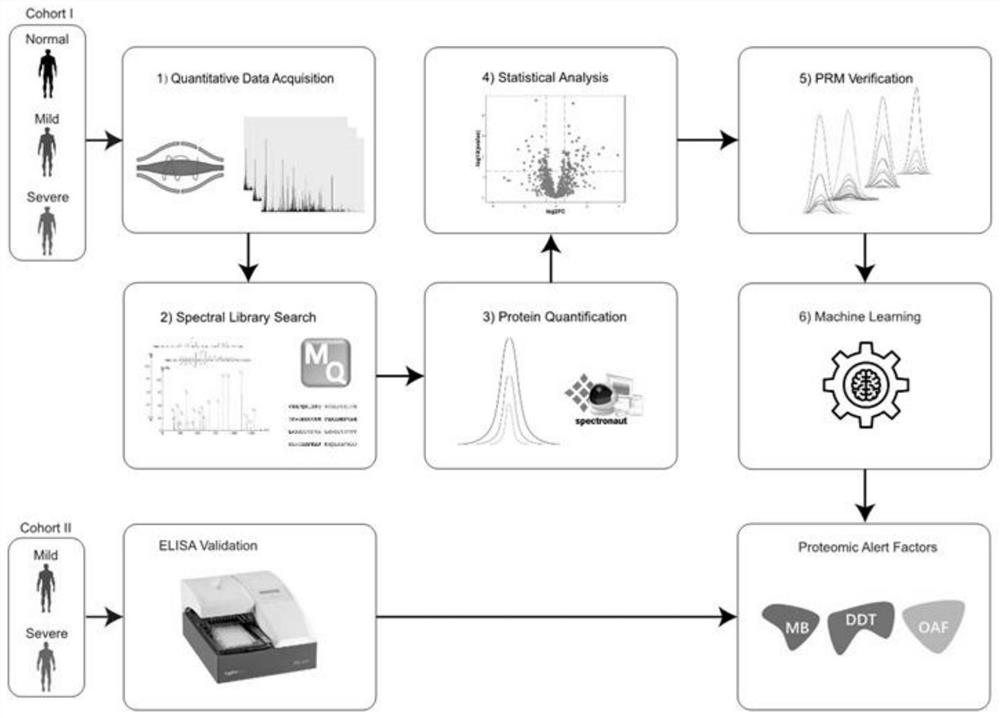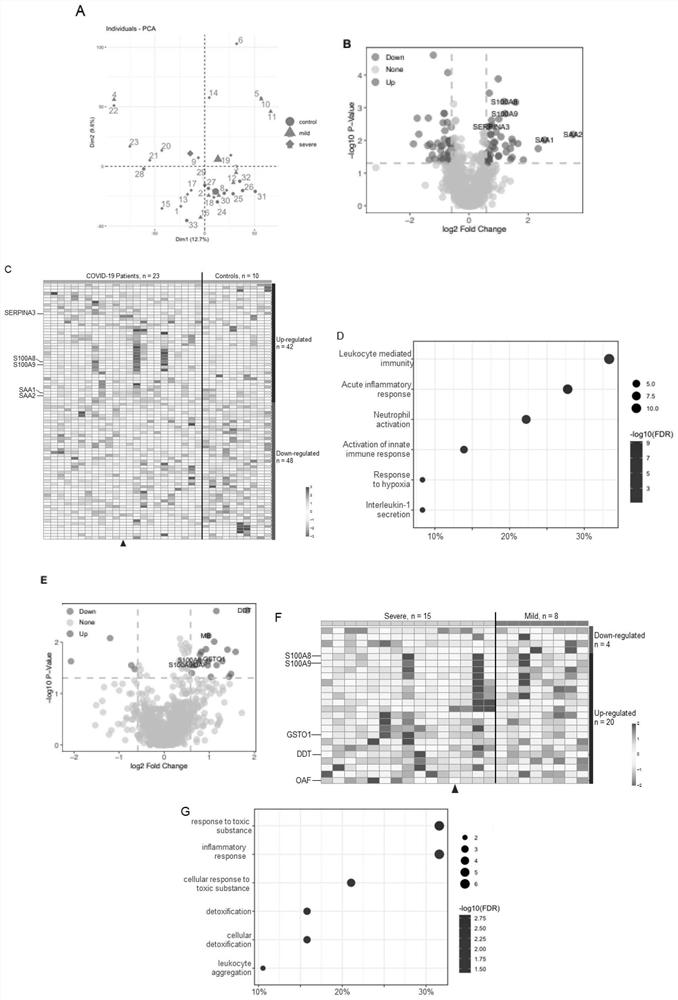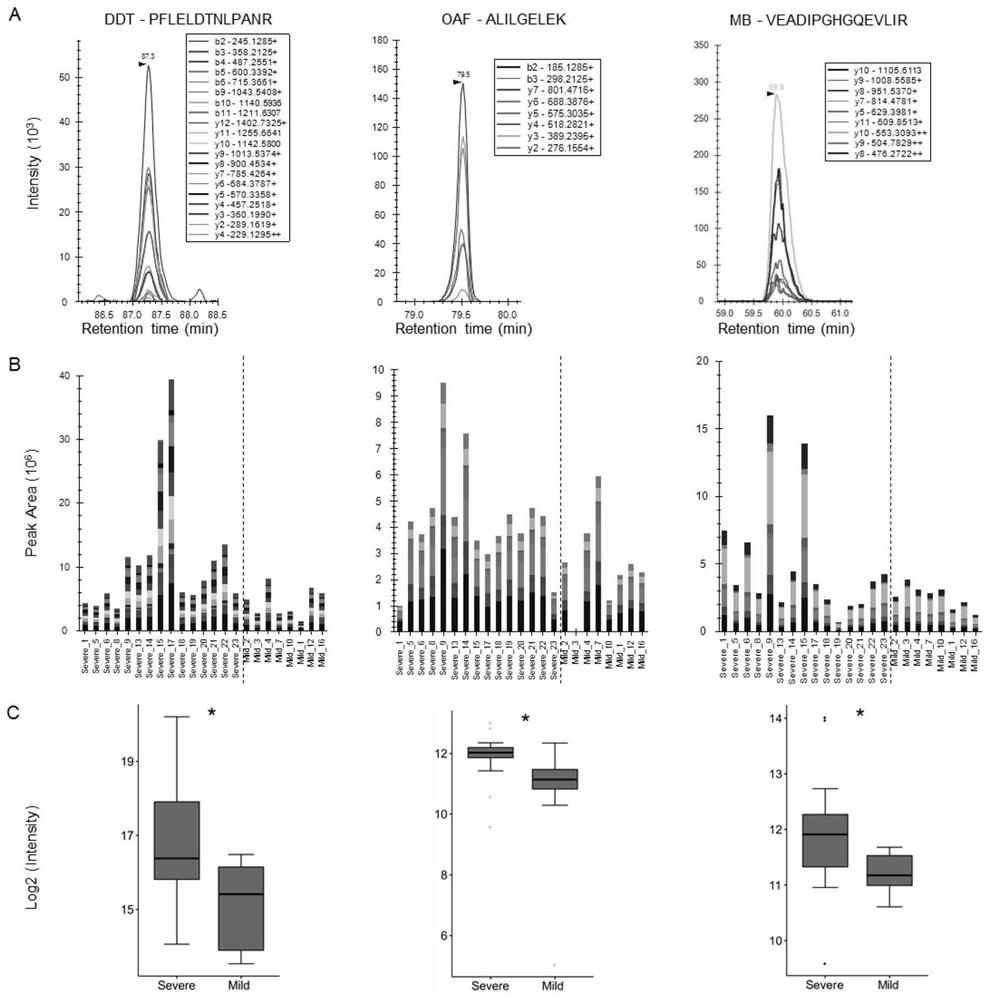Marker for predicting light-to-severe progression of COVID-19 patient, kit and establishment method
A technology for COVID-19 and method establishment, applied in the field of markers to quickly predict whether COVID-19 patients have mild to severe progression, can solve the problem of inability to judge the severity of the patient's condition in time, loss of attention of medical staff, and limited prediction accuracy and other problems, to achieve the effect of stable results, convenient material collection, fast and accurate results
- Summary
- Abstract
- Description
- Claims
- Application Information
AI Technical Summary
Problems solved by technology
Method used
Image
Examples
Embodiment 1
[0087] Example 1: Screening of markers for rapid prediction of mild to severe progression in COVID-19 patients 1. Preliminary screening of proteomic features of COVID-19 patients upon admission
[0088] Such as figure 1 As shown, the present invention provides a method for preliminary screening of proteome features when COVID-19 patients are admitted to the hospital, which specifically includes the following content:
[0089] (1) Serum sample preparation
[0090] Blood samples were collected from patients with COVID-19 on the day of their admission, in addition to blood samples from a control group of healthy adults, separated by centrifugation at 1,000g for 10 minutes at 4°C, and aliquots of serum were collected and stored in a -80°C freezer For follow-up research. It was divided into two cohorts. One cohort was used to find markers for mild to severe progression in COVID-19 patients, and the other cohort was used to verify the predictive ability of markers for mild to seve...
Embodiment 2
[0134] Example 2: Rapid screening kit for severe COVID-19 patients and its clinical application
[0135] 1) When a confirmed COVID-19 patient is admitted to the hospital, the blood sample of the patient is obtained within 24 hours, and the proteomics characteristic information of OAF, MB and DDT is obtained, and the specific operation is the same as that described in Example 1;
[0136] 2) Take the patient's OAF, MB and DDT data information as input variables and input them into the random forest model (AUC=0.907, CI: 0.87-0.93), ( Figure 5 b and 5c), the model will output the screening results: 1 means potentially severe patients, 0 means non-severe patients; there is no limitation;
[0137] 3) After screening the output results of the model, medical staff can understand the severity of the patient's condition based on the model analysis results combined with the patient's clinical manifestations and symptoms, and then allocate the corresponding medical resources and give ap...
PUM
 Login to View More
Login to View More Abstract
Description
Claims
Application Information
 Login to View More
Login to View More - R&D
- Intellectual Property
- Life Sciences
- Materials
- Tech Scout
- Unparalleled Data Quality
- Higher Quality Content
- 60% Fewer Hallucinations
Browse by: Latest US Patents, China's latest patents, Technical Efficacy Thesaurus, Application Domain, Technology Topic, Popular Technical Reports.
© 2025 PatSnap. All rights reserved.Legal|Privacy policy|Modern Slavery Act Transparency Statement|Sitemap|About US| Contact US: help@patsnap.com



